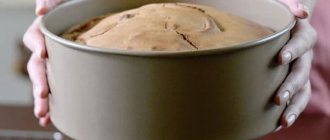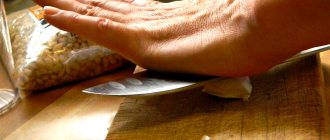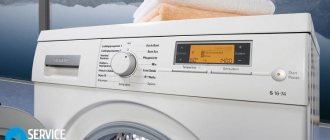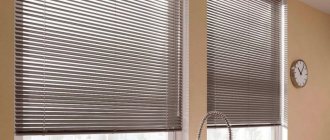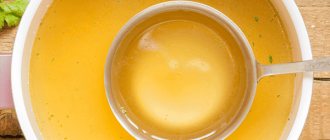What to do if baking paper sticks to baked goods?
First, cool your baked goods. This usually solves the puff pastry problem right away. If the paper sticks to baked goods made from yeast dough, after cooling, carefully wipe the paper with a wet cloth from the back side. Soaked paper can be easily removed.
Interesting materials:
What sneakers to wear with dresses? What crops are not grains? What crops are profitable to grow in Ukraine? What are the summer months like in Australia? What benefits do single mothers have in Belarus? Which Leaves are simple or compound? Which rays are more dangerous, alpha beta or gamma? What car brands are valued? What brands of crosspieces are there? What brands of TVs are assembled in Kaliningrad?
How to remove a cake from a silicone mold?
Silicone molds are quite convenient because they do not need to be greased with oil first. It is important to simply sprinkle them with water. You need to remove the cake from the mold, after letting it stand for 5-7 minutes.
Then you just need to tilt the pan a little to the side and the baked goods will fall out on their own, without even having to put in any effort. If the cake still sticks to the silicone mold, you need to bend it outward a little, as the material bends easily.
How to choose a silicone baking dish
A housewife who has decided to diversify her culinary repertoire, but has not at all become familiar with the approximate characteristics of the “new kitchen residents,” will primarily make her choice based on external data. However, experts advise purchasing silicone baking molds not only based on general attractiveness or matching size and volume, but also taking into account some more important points:
- It was clarified above that the safe silicone product is made of medical material. This should be proven not by the manufacturer’s words on the label, but by the presence of a quality certificate. Its number is entered in the “composition” column, and upon request, the seller must hand over the paper to the consumer for review and confirmation of authenticity.
- The easiest way to determine the quality of a silicone mold is to listen to the aroma emanating from it. The pungent smell of rubber, plastic and other caustic chemicals should alert you and dissuade you from purchasing.
- If you purchased an odorless mold, but when heated, an unpleasant aroma develops, do not put it in the oven again: use it to cool desserts or freeze ice.
- An additional quality control method that gives a relatively reliable result: try bending the product before purchasing. There should not be a white mark at the folded area.
- If, after carrying out basic tests, you still have doubts, lean towards buying a product with a neutral (light) shade: acidic colors are obtained from caustic dyes, which are harmful to the body.
- The country of origin does not matter; today both Belarus and the USA offer a good selection, but ordering a whole bunch from Aliexpress, where no one guarantees high-quality silicone, is not recommended.
For cupcakes
There are several varieties of such a product, depending on what the chef will bake:
- A large muffin tin can be used for a cake if it looks like an inverted bucket, or for a tall ring sponge if there is a rod in the center. It is predominantly trapezoidal, the lower diameter (bottom) is in the range of 10-17 cm. The price ranges from 150 to 900 rubles, depending on the manufacturer and size. You can buy good products of this type from Mayer&Bosh, Tescoma.
- Small molds are designed for cupcakes and muffins, have a flat bottom and the same smooth or corrugated walls, the diameter ranges from 5 to 8 cm. Height - up to 9 cm. The capacity usually does not exceed 150 ml. The most inexpensive is a set of 3 pieces. from Mayer&Bosh for 160 rubles, or Horse (Russia) - for 215 rubles.
A muffin tin may look like a sheet with several (often an even number) cells that have a round base. This option is convenient because the baked goods will not turn over, because... all elements are connected. However, some housewives prefer single small products - this can be more economically profitable, because You can buy any quantity, not 6, 8 or 12 pieces.
For cakes
There are 2 options here: some housewives prefer to use shaped molds in the shape of a heart, star, fish, etc. They are useful for small sponge cakes that are cut and assembled after the base has cooled. For mousse desserts, professionals recommend detachable options - this silicone cake mold is completely identical in appearance to a metal one, but is more convenient to use. The best options in these categories:
- Among detachable ones, Lurch (from 1,499 rubles) and Bradex (from 690 rubles) deserve attention. The price may vary depending on the size and the presence/absence of an additional non-stick layer.
- Among the curly ones, the leader is Tescoma, offering large, beautiful products from 830 rubles, and Pyrex, which is in the same price range. They are also on the same level in terms of quality.
For cookies
Making products from thin dough in such kitchen utensils is not practiced for reasons of speed, because There are no particular problems with baking them on a metal baking sheet. A silicone cookie cutter is used primarily with recipes that do not require rolling out, i.e. for sumptuous delicacies. The same famous “madeleines” can only be made in special shell molds. Chefs often prefer to use such utensils for curly gingerbread cookies. Outwardly, it is similar to muffin baskets - also in the form of a sheet with several cells (6-12).
You can find interesting options at:
- Silikomart. The manufacturer also offers beautiful stamps that can not only be used to make thin cookies, but also chocolate decor, as in the photo of store-bought two-layer cookies. Cost – from 1190 rub.
- Best Home Kitchen. In addition to standard molds, you can find stamps with patterns at a budget price - from 130 rubles.
For baking bread
This design is a long rectangle that has minimal difference between the bottom and top perimeter. The silicone bread container has absolutely smooth walls and bottom, although there are varieties with slight corrugation. The following manufacturers offer such dishes:
- Mayer&Bosh – from 230 rub.;
- Oursson - from 840 rubles;
- Fissman – from 490 rub.
There are also options for small (up to 20 cm in length) baguettes, mainly in sheets of 4-9 pieces. – these are offered by the Spanish brand Lekue. You can also order bun molds (hemispheres) from him. The issue price is from 1850 to 2550 rubles. In the (official) online store, experts advise looking at portioned muffin tins: the quality of Lekue silicone products justifies the high price.
Mastering silicone molds: new baking rules
Today, silicone baking molds have become widespread. And this is not surprising, because they have a lot of advantages for home and even industrial use. They are made from food-grade silicone, which can withstand high temperatures and does not emit any substances harmful to human health. And nothing burns. But some housewives still don’t know how to approach these forms. Let's find out!
As a rule, silicone molds can be used in both gas and electric ovens, sometimes in microwave ovens, but this should be indicated by a special mark on the packaging. Plus, they can go in the freezer and dishwasher.
In silicone molds you can not only prepare baked goods, but also prepare cold desserts and dishes with gelatin. Mousse cakes are worth mentioning separately. Some recipes cannot be completed at all without a special silicone mold.
Before first use, any silicone molds must be rinsed with warm water to wash off process dust. It is usually recommended to oil silicone molds only the first time you use them, but some manufacturers recommend that you always do this.
Pay attention to the maximum permissible temperature for baking; it should be indicated on the packaging. Sometimes these can be quite high temperatures, for example, 240-260 degrees, but if there is no such marker, then it is better not to exceed the temperature of 200 degrees to avoid deformation of the forms. In addition, direct contact with the fire source and burner, oven walls is not allowed, and also avoid using the “grill” mode. This will help maintain the perfect silicone surface for a long time.
There are also some peculiarities in filling silicone molds. This is due to the fact that they are very flexible and when transferring the filled form, the dough can leak out. Therefore, before filling, the form should be placed on a wire rack or baking sheet, filled with dough and transferred to the oven together with the wire rack. Sometimes silicone molds are sold with special metal frames, which are designed so that when the dough increases in volume, the mold does not lose its original appearance. Empty pans should not be placed in a hot oven; this may also cause deformation of the surface.
Once the cake or cupcakes are ready, they are very easy to remove from the silicone molds as nothing sticks to them. Depending on the recipe, the hot or cooled product is removed by turning the mold over or tilting it to the side. You can press lightly on the bottom, thereby helping the cake to leave the mold. If, nevertheless, the products are slightly stuck, then you need to remove them by passing a silicone, plastic or wooden spatula between the walls and the cake. There is no need to use knives or other metal objects to avoid damaging the smooth surface. If the surface becomes scratched, there is a high chance that the baked goods will start to stick.
Silicone molds are very easy to clean with warm water, a sponge and mild dishwashing detergent. Do not use any harsh chemicals to avoid causing unexpected chemical reactions. Do not scrub silicone molds with metal brushes or brushes. If a piece of dough sticks somewhere, just soak the mold for a while in plain water and detergent; all dirt will come off easily.
You can store the molds in any kitchen cabinet or pantry; they tolerate temperature changes well and do not deform. In addition, the forms can be bent and rolled to save space, and they will immediately return to their original form as soon as you unfold them again.
How to work with silicone molds
Silicone molds are recognized as the most convenient for baking. The elastic walls can be easily stretched by prying the edges of the cake with a wooden spatula. Also, the material does not require constant lubrication with oil.
Turning the cake over and hitting the bottom with a spatula is not the best solution. The upper part will most likely come off, but the lower part will remain. If you want to shake out a hot cake, lower the bottom of the pan into a bowl of cold water for a few seconds - the temperature difference will help the dessert “bounce”.
However, the best option is to wait 15-20 minutes for the cake to cool slightly. This way the dough won't settle, and you won't risk getting too burned. First, make sure that the bottom comes off well, then turn the cake over onto a plate and lightly tap the sides, moving from the bottom.
Advice from Miss Clean magazine If the pie still falls apart, think of a thick filling that can “glue” the dough together: condensed milk, melted chocolate, custard, jam or preserves.
To ensure that the cupcakes are quickly removed from the molds, use paper blanks. They also make it convenient to enjoy baked goods outside the home.
If the edges of the cake are very burnt, carefully cut them off with a sharp knife. Do the same with the bottom part. If it is impossible to maintain the integrity of the cake, cut it directly in the mold into squares and take them out one by one.
We recommend: How to completely remove limescale in a kettle using soda, vinegar and citric acid
How to bake in a silicone mold in the oven
Cooking with such molds is no more difficult than with ceramic, glass or steel. Choose a suitable design and you won’t even have to come up with decorations for a quick biscuit. Follow the basic rules given above, pour the dough, send it to the oven, microwave oven or multicooker. Silicone baking utensils are versatile and easy to use, especially if you consider these professional tips:
- Before cooking in a mold, rinse it and wipe it dry: it accumulates dust and static well, no matter where it is placed.
- Due to the high thermal conductivity of silicone, dishes are baked very well, so the optimal temperature will have to be selected again - it may be lower than usual.
- If this is your first time using a silicone mold, carefully monitor the dish: it will not take as long to cook as you are used to - the time will be reduced by approximately 15-20%.
- Check the manufacturer's information on the packaging: it may indicate at what temperatures a particular utensil should be used and where.
- Let the baked goods cool before removing them.
Is silicone harmful for baking?
Neither steel, nor ceramics, nor Teflon, nor glass have seen such a number of disputes regarding the safety of a material that comes into contact with food. They talk about the dangers of silicone for baking non-stop, each time putting forward new facts and hypotheses. However, where is the truth, and where is just an attempt to find a non-existent danger? Chemistry experts confirm that such products can have a negative effect on the body, but only if they are chosen and used incorrectly:
- Trying to save money, some manufacturers release molds made of “technical” silicone to the commodity market: a cheap material, often supplemented with low-quality dyes. As soon as they begin to heat up, harmful substances are released, which, together with the food inside the form, enter the human body.
- Medical or “food grade” silicone does not pose such a danger, no matter what temperature it is exposed to. It is suitable for both children's baking recipes and for preparing food for sensitive organisms - there is no release of harmful substances into the environment. However, in terms of safety, it still cannot be compared with ceramics or glass.
Remove baked goods from a glass or springform metal pan
Metal and glass molds must be greased with oil before pouring the dough. You need to cover both the bottom and sides well. An additional layer of breadcrumbs, flour or semolina will provide additional protection against the dough sticking to the pan.
To obtain a crispy crust on the bottom, for example, when baking charlotte, you need to use granulated sugar.
To easily remove the cake from the pan, you can place the bowl with the dough in a container of hot water or briefly wrap it in a damp towel. Due to the temperature, the metal of the springform pan expands slightly, and the cake can be taken out quite easily.
You can try taking out the cake by tilting the pan a little - about 45 degrees. This way, the baked goods will end up upside down on the dish. You need to hold the edges of the mold, helping yourself a little with a spatula. This way the cake or pie will be intact.
Found a violation? Report content
How to remove a stuck cake from a mold?
Remove stuck cake
out of the mold It turns out that if the finished
cake
sticks to a baking sheet or baking dish, you just need to hold it over steam.
In addition, the form can be wrapped in a damp towel for a few minutes. After this, the cake
can be removed.
Interesting materials:
How to dilute Lador filler? How to dilute filler? How to breed henna with basma? How to dilute hair dye in proportions? How to dilute hair dye with an oxidizing agent? How to dilute the formula from birth? How to decompress a ZIP folder? How to revive MI Band 2? How to edit multi-page PDFs in Illustrator? How to edit text in PDF on Mac?
